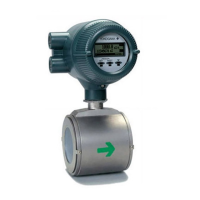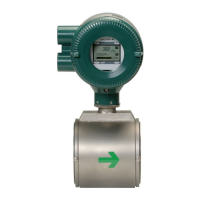Figure 4.2.1 Dedicated Signal Cable AXFC
Theowsignalistransmittedviathisdedicatedcable.
The cable is constructed with double shielding over the
two conductors, and heat-resistant vinyl is used for the
outer jacket material.
Finished diameter: 10.5 mm (0.413 in.)
Maximum length:
Combination with the AXFA11 converter: 200 m (660 ft)
Combination with the AXFA14 converter: 100 m (330 ft)
Maximum temperature: 80°C (176°F)
IMPORTANT
If the cable is longer than required, cut off any extra
length rather than coiling it up, and terminate the
conductors as shown in Figure 4.2.2.
Avoid using junction terminal boards to extend the
cable length, as this will interrupt the shielding.
20 (0.8)
ø10.5 (0.4)
AXFC
L (Specified Dimensions)
150
±5
8 (0.3) max.
150
±5
70 (2.76)
60 (2.36)
90 (3.54)
(5.9)
(5.9)
55 (2.17)
90 (3.54)
50 (1.97)
25 (0.98)
SA
SB
A
C
B
A
C
B
8(0.3) max.
White Black
Red
White Black Red
On the
converter
side
On the
flowtube
side
Figure 4.2.2 Treatment of Dedicated Signal Cables
CAUTION
• As crimp terminals A, B, SA, SB and C have their
own electrical potentials, securely insulate them so
as not to come in contact with one another.
• To prevent a shield from coming in contact with
another shield or the case, cover each shield with
a vinyl tube or wrap it in vinyl tape.
NOTE
Conductors A and B carry the signal from the
electrodes, and C is at the potential of the liquid (signal
common). Shields SA and SB are kept at the same
potentials as the individual electrodes (these are
actively driven shields). This is done to reduce the
effect of the distributed capacitance of the cable at
long cable length.
Note that, since the signals from the individual
electrodes are impedance converted inside the
converter, errors will result if they come in contact with
any other component. Great care must be taken in the
cable end treatment.
(2) Excitation Cable
JISC3401controlcableequivalent
JISC3312powercableequivalent
14 AWG Belder 8720 equivalent
Outer Diameter:
With no gland option:
6.5 to 12 mm (0.26 to 0.47 in.)
With gland options EG, EU and EW:
10.5 or 11.5 mm (0.41 to 0.45 in.)
With gland options EP:
6 to 12 mm (0.24 to 0.47 in.)
Nominal Cross Section:
Single wire; 0.5 to 2.5 mm
2
Stranded wire; 0.5 to 1.5 mm
2
On the converter side
85 (3.35)
EX1
EX2
EX1
EX2
85 (3.35)
On the flowtube side
